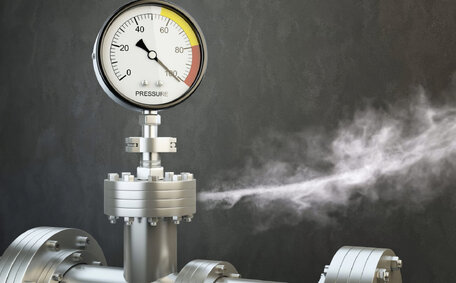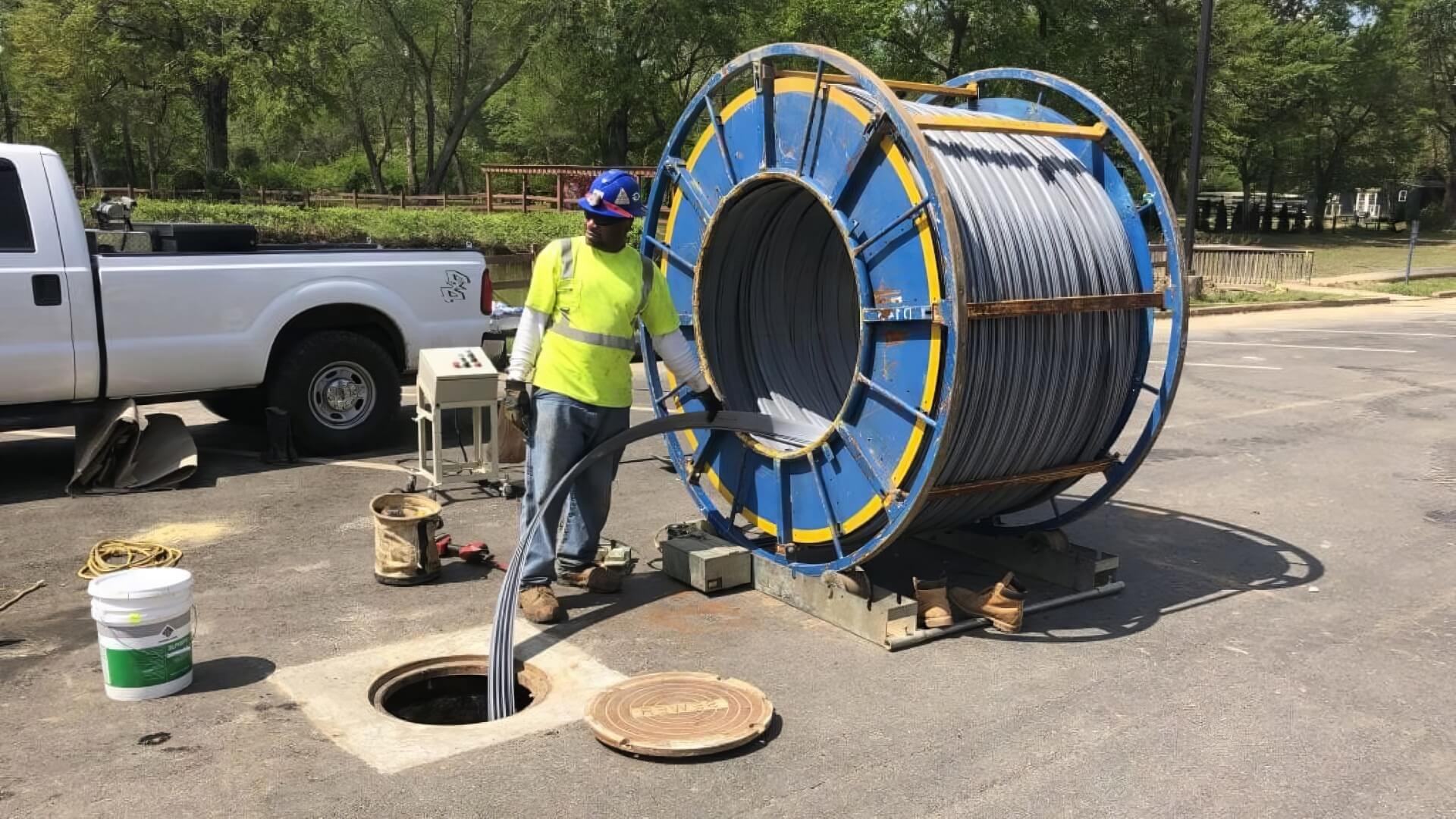Understanding Gas Regulator Function and Types
Pressure regulators manage the gas flow from propane tanks to appliances, and they need periodic replacement to ensure safety and consistent performance. The critical function of a regulator is to facilitate a smooth transition from the propane tank to your appliances, ensuring they receive gas at the ideal operating pressure.
A variety of regulators are designed to match the needs of different gas-powered appliances:
- RV propane regulators are crucial for sustaining a consistent gas flow to your RV, fueling outdoor cooking on your grill and other propane-powered appliances.
- Single stage regulators are installed at the start of the gas delivery system, securely connected to the gas line, ensuring even delivery to household appliances.
- Second stage regulators further reduce pressure, providing granular control over gas pressure for various applications.
At Guildford Plumbing, we offer regulator servicing and installation to ensure your gas appliances operate at the correct pressure for safety and efficiency. We have extensive experience ensuring your regulators are functioning in a safe efficient manner with the right gas pressure for your appliances.
Common Signs of a Faulty Gas Regulator
You might have a faulty propane regulator if you notice:
- Popping noises - Unusual noises from a regulator typically signal incorrect propane flow or pressure.
- Uneven flame height - If burner flames are uneven, flaring up and down, this can indicate inconsistent gas flow due to a faulty regulator.
- Soot buildup - Heavy black soot building up on pots, gas grills regulator surfaces, or your stove burners can signal bad propane mixtures if the regulator delivers too much gas.
- Slow appliance ignition - Slow appliance ignition or failure to start signals the need for a new regulator, indicating disrupted propane flow.
- Gas smell - Should you catch a whiff of an unusual aroma and smell gas, it’s likely indicating leakage around a compromised regulator seal.
Be vigilant for faulty regulator signs such as unusual odours or inconsistent pressure, and consult experts to ensure your home’s gas safety. Ignoring a malfunctioning inlet valve in a double stage propane tank with a faulty regulator poses significant safety risks.
Testing Methods to Diagnose Gas Regulator Issues
There are a few methods you can do to test whether your gas regulator is faulty:
Check for Leaks
One of the best methods to diagnose issues is to turn off propane to confirm there’s no disruption in gas flow and also to check for leaks:
- Craft a soapy water mixture for the soap test, destined to become a fault-detecting solution with its suds-rich content.
- Once you turn propane in use, gently apply the soapy mixture to areas where brass connections meet to reveal any signs of a faulty assembly, such as no gas flow indicating an obstruction.
- Bubbles forming during this test can be a sign faulty component integrity, suggesting the need to replace your propane regulator due to a potential leak.
Inspect Flame Appearance
Inspecting the appearance of the flame on your gas appliances is also a helpful diagnostic step:
- Begin by examining the colour and stability of your grill’s flame upon ignition; inconsistencies here could suggest a malfunction.
- Weak flames that are yellow, orange, or uneven can be a sign of a faulty propane regulator in use, affecting the gas flow you receive.
Monitor the Pressure Gauge
For regulators equipped with a pressure gauge, perform a pressure test to assess gas pressure levels:
- If you observe pressure irregularities, such as spikes, drops, or constant changes, promptly turn off the gas supply and consider a detailed inspection or possible replacement.
- Consistent orange or red gauge readings indicate dangerously high gas pressure.
Activate the immediate shutoff safety feature by turning off the gas supply at once if you detect leaks or irregular pressure. Contact licenced professionals like Guildford Plumbing on 1300 349 338 for repairs.
Resetting and Replacing a Faulty Gas Regulator
Resetting the regulator and turning off the gas cylinder can fix issues such as incorrect propane distribution caused by valve blockages or moisture. To reset the propane tank valve safely and restore optimal functionality:
- Securely turn off the tank by moving the valve to the off position, ensuring your model has a fail-safe mechanism for a complete shutdown of gas flow.
- Disconnect your devices from the regulator and consider replacement if you notice damage or inconsistent performance.
- Adjust the regulator’s adjustment nut to the off position for a secure shut-off and then carefully reopen the valve.
- Reignite the gas supply and attentively monitor your appliances for an interval that is long enough to confidently assess the flame characteristics and proper functionality.
If there’s no improvement after resetting, or if the same issues arise again soon, it’s most likely that the regulator diaphragm has failed and the regulator needs replacement. Since the regulator’s diaphragm is susceptible to wear, it’s advisable to replace it every five years or more frequently to ensure continued efficiency.
Replacement of your pressure regulator must adhere to updated Australian Standards and should be carried out by licensed technicians, such as our team at Guildford Plumbing, to ensure your safety. We replace regulators ensuring optimal gas pressure propane and gas flow for efficient, safe appliance operation.
Regular Maintenance to Prevent Gas Regulator Failure
You can use proactive maintenance strategies for your propane system, particularly the grill regulator, to prevent possible malfunctions and ensure continued safe usage. Here are some suggested maintenance tips:
Regularly perform a leak test on hose regulator connections with soapy water to check your regulator’s condition, as consistent maintenance is crucial. Any detected leaks, signaling wear, need replace immediately to ensure safety.
Inspect Visually
Inspect the regulator components several times a year for visible damage, such as cracks or corrosion, which would require replacement.
Clean Blockages
Use a regulator check to blow air with compressed air to clear any debris blocking regulator vents or affecting inlet pressure to ensure your propane grill performs optimally.
Monitor Flames
Regularly check that your burners produce a blue and stable flame. Yellow or uneven flames may necessitate regulator adjustment or replacement.
Record Gauge Readings
Note pressure gauge levels to track changes over time. Fluctuations in pressure can still precede when a regulator fails and signal potential failure.
Guildford Plumbing’s licensed professionals can provide thorough servicing and preventive maintenance of your gas grill regulator, inspecting components during annual checks to maximise regulator longevity and safety.
When to Call a Professional for Gas Regulator Issues
When regulator troubles arise, it’s always best to call in a professional gas technician if you suspect faultiness or have persistent, recurring issues with your gas regulator that you are unable to resolve yourself.
Contact Guildford Plumbing for help with your gas regulator problems if:
- If resetting the regulator does not enhance performance your gas system needs or troubleshooting suggests there might be a deeper malaise with the gas valve.
- If you detect a gas smell, or a gas leak persists even after regulator resets and diligent troubleshooting.
- If burner flames remain uneven, yellow or orange despite your best efforts.
- When pressure gauge readings continue to fluctuate or remain outside the normal range.
- If the regulator shows visible damage like cracks or corrosion.
- If appliances become slow or fail to ignite after regulator resets.
Should you encounter issues creeping into your regulator’s functionality, our licenced technicians can quickly identify the exact cause and do need to replace the regulator if confirmed faulty – ensuring its optimal function.
Contact Guildford Plumbing’s skilled professionals at 1300 349 338 or [email protected] for propane gas regulator repairs, installations, and replacements.






